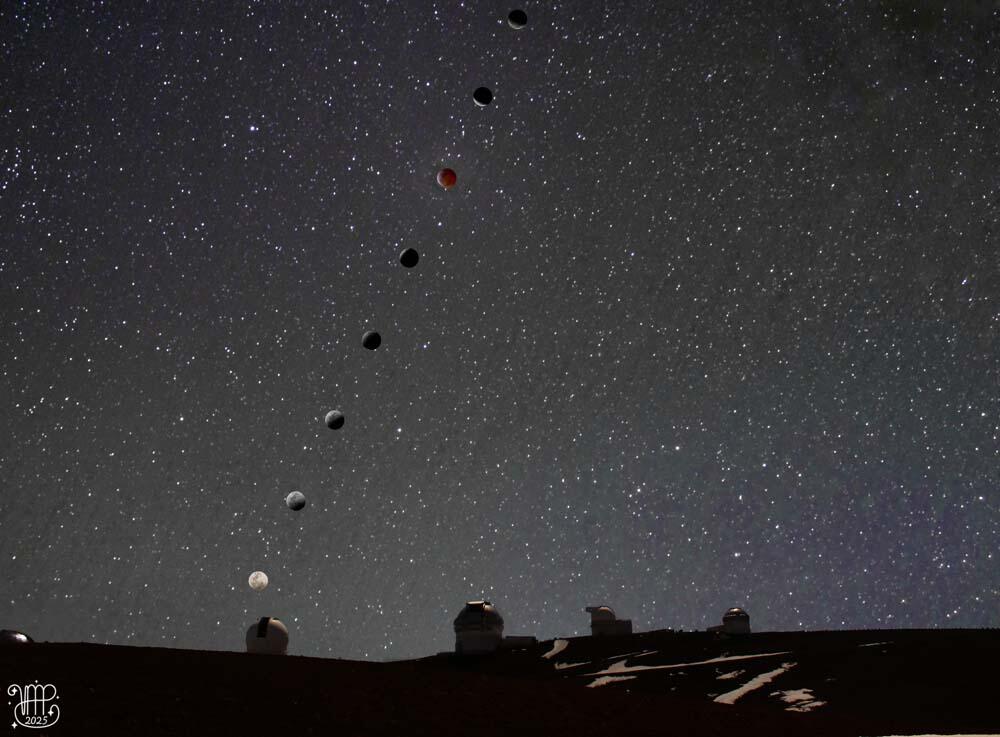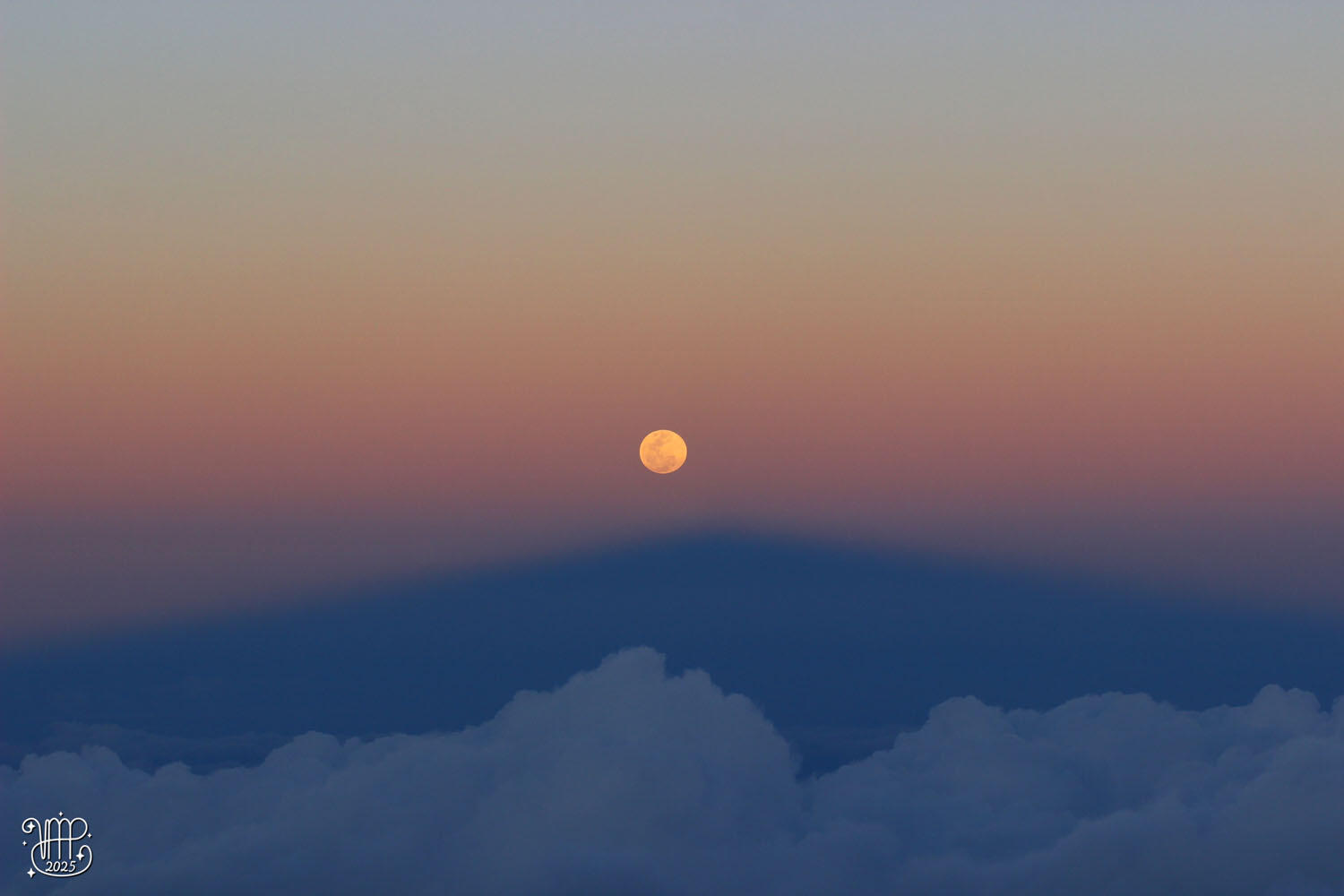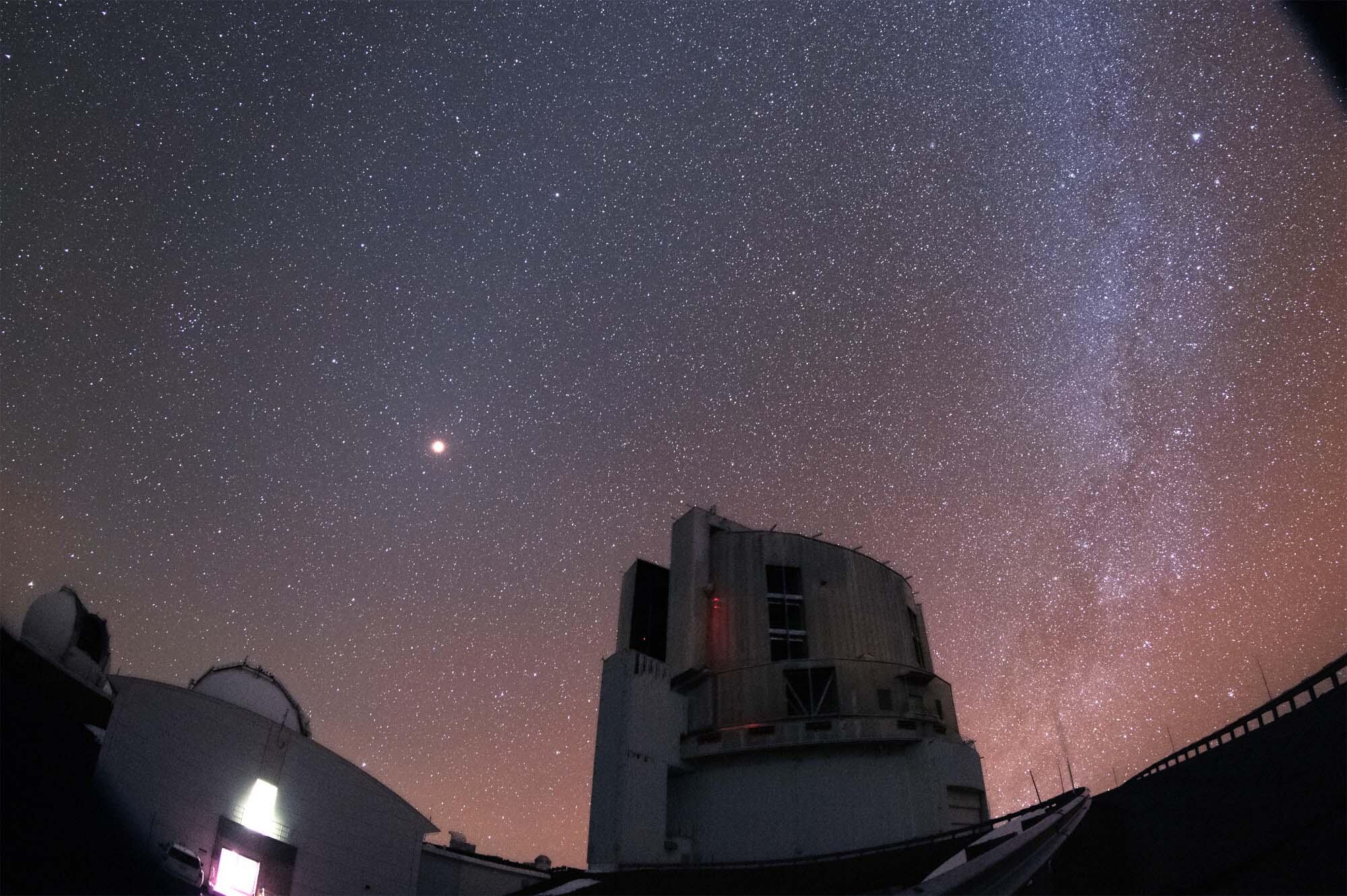The western hemisphere witnessed a spectacular total lunar eclipse on the night of Thursday, March 13, 2025. During this phenomenon, the Sun, Earth, and Moon aligned perfectly, causing the full Moon to pass through the Earth's shadow, known as the umbra. While within the umbra, the Moon takes on an orange-reddish hue. This stunning event was observed from the summit area of Maunakea by support astronomers of Subaru Telescope, Dr. Vera Maria Passegger, and Dr. Ichi Tanaka. "The Moon appears reddish because some sunlight still reaches it through Earth's atmosphere," Dr. Passegger explains. "The blue parts of light are scattered, while the red parts pass more directly through the atmosphere and illuminate the Moon."
Figure 1: The full Moon during totality (Canon EOS 600D, 0.5 sec exposure, 300mm, f5.6, ISO 800) (Credit: Dr. Vera Maria Passegger/NAOJ)

Figure 2: Composite image of the totally eclipsed Moon over Maunakea. Observatories from left to right: NASA Infrared Telescope Facility (IRTF), Canada France Hawaii Telescope (CFHT), Gemini North telescope, University of Hawai`i 2.2-meter telescope, and United Kingdom Infrared Telescope (UKIRT). A high resolution image is available here (2.2 MB). (Canon EOS 600D, 10 min exposure, 18mm, f5.6, ISO 3200) (Credit: Dr. Vera Maria Passegger/NAOJ)

Figure 3: Composite image of all stages of the total lunar eclipse. A high resolution image is available here (300 KB). (Canon EOS 600D, 10 min exposure, 18mm, f5.6, ISO 3200) (Credit: Dr. Vera Maria Passegger/NAOJ)

Figure 4: The full Moon rises above the shadow of Maunakea. A high resolution image is available here (2.2 MB). (Canon EOS 600D, 1/200 sec exposure, 92mm, f6.4, ISO 200) (Credit: Dr. Vera Maria Passegger/NAOJ)
As Dr. Passegger captured photographs of the eclipse, Dr. Tanaka set up another camera to stream the celestial event live online. During this live stream, he also photographed the moment of totality and discovered a faint glow known as gegenschein. Similar to zodiacal light, gegenschein is a subtle illumination along the ecliptic that appears opposite the Sun and is fainter than zodiacal light. While zodiacal light is typically observed before sunrise or after sunset, gegenschein can be seen at night. Both zodiacal light and gegenschein are believed to be diffuse sunlight scattered by interplanetary dust in the Earth's orbital plane. "During totality, the Moon is always within the gegenschein because it is in the Earth's shadow. However, gegenschein is very faint and challenging to photograph. Thanks to the exceptionally clear and dark sky over Maunakea, I was able to capture it successfully," explains Tanaka.

Figure 5: The Subaru Telescope and the Moon during totality (a bright point). The Subaru Telescope’s control building and Keck I+II are visible in the lower left. The Milky Way spans the right side of the image. Gegenschein is faintly visible from the lower left to the upper right of the Moon. A high resolution image is available here (2.1 MB). See a black and white inverted image to identify gegenschein and other objects in the photo. (Canon EOS 600D, 15mm, f4.5, ISO 25600, 15 sec exposure, 11 frames composite) (Credit: Dr. Ichi Tanaka/NAOJ)
Subaru Telescope provided a live stream on its official YouTube channel from 7:00 p.m. to 10:30 p.m. (Hawaii-Aleutian Standard Time). Viewers from Japan, the United States, Bhutan, Canada, Taiwan, and other countries and regions enjoyed the lunar eclipse on Maunakea in real time, with over 10,000 viewers. When totality began, the number of simultaneous viewers exceeded 500.
Video: Total lunar eclipse video live streamed from the Subaru Telescope facility on Maunakea. Footage from the Subaru-Asahi StarCam, capturing the Eastern sky, and the CFHT-Asahi StarCam, capturing the Western sky, is available on the Subaru Telescope-affiliated YouTube channel, SubaruTel_StarCamAdmin, along with a timelapse video recorded by the Subaru All-Sky Camera. (Credit: NAOJ)


